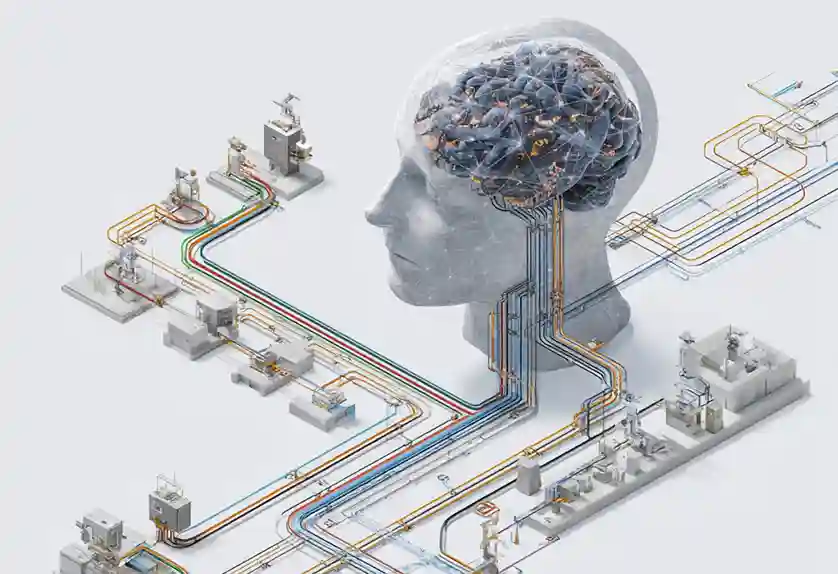Content workflows are the foundation of a company’s marketing efforts. Nowadays, content powers almost every digital marketing strategy and campaign. Production delays, off-topic information, and content stalled in the review and approval processes can hinder these campaigns.These bottlenecks can prevent campaigns from succeeding or even launching in the first place.
On the other hand, the content development process runs well when a purposeful and effective content workflow is precisely defined and documented. It ensures that all of your team's content is of excellent quality and delivered on or before the deadline.
We’ll discover the several steps to designing an effective content workflow.But before that, let’s take a look at what content workflow is and why it is important to optimize it.
What Is a Content Workflow?
A content workflow is a set of duties that a content manager or team must accomplish to complete and finalize a piece of content. Content marketing workflows, also known as a Content Governance Model, outline the roles, duties, and documentation for each step that a piece of content must go through. It develops from conception to publication, distribution, management, optimization, and, if necessary, decommissioning too.
As every piece of content is unique, the optimal approach to moving it through a workflow is by the type of material you're creating and the responsibilities your team needs to fulfill.
When it comes to developing and producing content, content workflows help to eliminate common challenges. Regardless of how big the tasks are, a well-defined workflow will help processes run more easily.
For instance, from creating and posting a small post on social media to launching a multi-channel campaign across different online channels, a content workflow can help manage all these tasks efficiently.
Why Is It Important to Optimize Content Workflows?
The content pipeline at every organization may differ, it all depends on the type of content you develop, the structure of your content creation team, and other elements of your business operations.
A well-defined content workflow assists in ensuring:
- The content is accurate, comprehensive, reliable, and consistent.
- Segmentation of content into manageable tasks.
- Identification of each stage of the content's evolution.
- Determine when and how content is approved.
- Time-management by using reusable templates and processes.
- Realistic content targets and deadlines.
- Common content challenges, such as inefficiencies and inconsistencies, are handled and resolved.
- The content management team sees how and where they fit into the bigger picture of content development, which enhances organizational involvement.
- To hold managers with content responsibilities to a high standard of accountability.
With a workflow in effect, you'll be able to create and produce excellent quality content in fewer hours, which is essential for achieving your content delivery on time.However, a poorly structured content workflow can thwart your efforts. If you find any of the following challenges, it may be time to reevaluate your workflow processes:
- The production and publication of ready-to-go content have become a time-consuming procedure that could take weeks or months.
- The delivery of content is unreliable and irregular, and opportunities for promotion are wasted.
- The management is unsure and unaware of who is accountable for what responsibility.
- A lot of time was wasted in determining the next steps.
The goal is to avoid focusing entirely on content execution and delivery. When teams stress execution more, they could fail to design their workflow processes effectively, resulting in poor outcomes. In the end, higher-quality content delivery helps you achieve your objectives faster.
Steps to Design an Effective Content Workflow
There isn't a universal content workflow that suits everyone. It is essential to design one tailored to your resources and content requirements. Although, each organization's content requirements are, of course, unique.
Here are the steps for designing an effective content workflow:
Planning
To begin with, you must decide on the subject of your content. Then, create topic clusters and concepts, dividing them into smaller chunks. Develop a results-driven content strategy that is simple to follow for anyone working on or reviewing the content.
Content templates can assist you in scaling up consistent, high-quality content generation as you scale up your content production.
Prioritization
Because not all content requirements are the same, just because someone says they need something immediately doesn't mean you have to process it first. Prioritize to ensure that each requirement or piece of content is processed under your system's rules.
Development of Content
The content development phase must be planned out with systems and processes to prevent unnecessary delays and potential bottlenecks later on. Using project management tools and automation makes the process easier and ensures that everybody is on the same page with project deadlines.
Organization
Decide how you'll store the content and make it accessible to others once it's been created. Teammates have most likely approached you with requests for your company's vision, trademarks, or branding paperwork. This type of data must be easily accessible to everybody in the company.
Analysis
Another step that's easy to overlook is analysis. Therefore, you must understand how content affects broader marketing initiatives. The idea is to make it a habit to compare your content's performance to its initial objectives and identify where you can improve.
Management
Maintaining high standards for your content could become increasingly difficult as your content output expands. Big firms don't always know what's on their website and whether it's useful enough to be there.
Effective management guarantees that all content on your website is of excellent quality, reliable, and timely. To ensure that your content information doesn't become outdated or erroneous, build in a content review strategy.
Decommissioning
Some content becomes invalid and must be removed to avoid giving readers inaccurate or contradictory information. Set an automated reminder to remove those when you post content that must be decommissioned.
How Collaboration Between Content Managers and DevOps Pipeline Can Aid in Optimizing Content Workflow
DevOps is a concept that combines the two words, development and operations, to describe a collaborative or cooperative attitude towards the duties performed by a firm's IT operations and software development teams.
DevOps fosters improved communication between IT operations, app development teams, and others in a wider context.The importance of DevOps-focused cooperation and transparency cannot be emphasized. While automated and efficient application and service use are crucial aspects of DevOps, the human factor can not be overlooked.
But what does DevOps have to do with content management?
In every industry, clients and end-users are demanding and expecting content-driven solutions across an increasing number of online channels. Therefore, the integration of DevOps and content management is imperative.
Here's how collaboration between content managers and DevOps pipeline can help with content workflow optimization:
- It can help to accelerate the creation of content-driven web apps and smartphone apps.
- It can assist in regular content publishing without the inefficiencies and silos that have historically been found with web content management.
- It enables faster marketing, particularly for omnichannel content apps and services.
- With this collaboration, personalized and localized content can now be achieved more straightforwardly.
In a DevOps framework, the purpose of a content management team is to make frequent updates to meet clients’ expectations. However, this must be done with caution, professionalism, and within the system’s parameters.
DevContentOps: Content Management and DevOps Collaboration
DevOps alone is inadequate for developing and optimizing content-driven user experience. So, a compelling digital experience is very important. Therefore, including content teams, platforms, and procedures is necessary.
DevContentOps is a unique approach that effectively combines content management teams, workflows and tools (e.g., CMS) with conventional DevOps tools and processes to provide advantages like quicker production schedules, smooth development, continuous publishing (CI/CD/CP) and seamless collaboration.In a nutshell, with DevContentOps, organizations can deliver the digital experiences that their audiences expect without jeopardizing content creators, IT operators, and developers’ workflows and productivity.

 Hitesh Jethva
Hitesh Jethva




